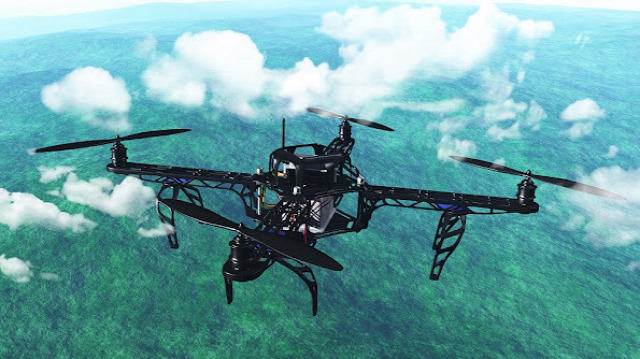
Unmanned Aerial Vehicles (UAVs), commonly known as drones, have revolutionized military operations, providing intelligence, surveillance, reconnaissance (ISR), and tactical support in diverse environments. Among the various categories of UAVs, tactical UAVs play a pivotal role in modern warfare due to their versatility, agility, and mission-specific capabilities. As global defense spending increases and technology advancements continue to reshape the battlefield, the tactical UAV market is experiencing unprecedented growth and innovation.
According to BIS Research, the global tactical UAV market is estimated to reach $15.30 billion by 2033 from $5.58 billion in 2023, growing at a CAGR of 10.61% during the forecast period 2023-2033.
Tactical UAVs are compact, maneuverable aircraft designed for short-to-medium range operations, typically within line-of-sight or beyond-line-of-sight ranges. These UAVs serve a wide range of military applications, including battlefield surveillance, target acquisition, electronic warfare, communications relay, and strike missions. Their compact size, advanced sensors, and real-time data transmission capabilities make them invaluable assets for enhancing situational awareness and operational effectiveness on the battlefield.
Tactical UAV Market by Application
- ISR
- Target Acquisition
- Combat Operations
- Electronic Warfare
Tactical UAV Market Dynamics and Growth Drivers:
Several factors are driving the growth of the tactical UAV market:
-
Increasing Demand for ISR Capabilities: In today's asymmetric warfare scenarios and complex operating environments, the need for real-time intelligence and reconnaissance is paramount. Tactical UAVs provide commanders with timely and actionable information, enhancing situational awareness and decision-making capabilities on the battlefield.
-
Advancements in Technology: Rapid advancements in UAV technology, including miniaturization, sensor integration, autonomy, and endurance, are expanding the operational capabilities of tactical UAVs. Improved sensors, such as electro-optical/infrared (EO/IR) cameras, synthetic aperture radar (SAR), and signals intelligence (SIGINT) systems, enable enhanced surveillance and target acquisition capabilities.
-
Cost-Effectiveness and Efficiency: Compared to manned aircraft, tactical UAVs offer significant cost savings in terms of acquisition, operation, and maintenance. Additionally, their ability to loiter over the battlefield for extended periods reduces the need for manned reconnaissance missions, minimizing operational risks and maximizing mission effectiveness.
-
Growing Threat Environment: The evolving threat landscape, characterized by asymmetric warfare, terrorism, and regional conflicts, underscores the importance of agile and adaptable military capabilities. Tactical UAVs provide militaries with a force multiplier, enabling them to gather intelligence, conduct precision strikes, and maintain operational superiority in contested environments.
-
Increasing R&D Investments: Governments and defense contractors worldwide are investing heavily in research and development (R&D) to enhance the capabilities of tactical UAVs. Focus areas include autonomy, swarming technology, anti-jamming capabilities, and low-observable (stealth) designs, aimed at improving survivability and mission effectiveness in hostile environments.
Request A Free Detailed Sample on Tactical UAV Market - Analysis and Forecast, 2023-2033
Tactical UAV Market by Region
- North America
- Europe
- Asia-Pacific
- Rest-of-the-World
In terms of regional dominance, North America spearheads the global tactical unmanned aerial vehicle (UAV) market. This leadership position is owed to the region's robust technological infrastructure and flourishing defense sector, both of which drive the advancement and implementation of cutting-edge UAV technologies. Furthermore, the escalating requirement for surveillance and reconnaissance capabilities across diverse security sectors continues to fuel the demand for tactical UAVs in North America.
Market Challenges and Opportunities:
Despite the rapid growth and technological advancements, the tactical UAV market faces several challenges, including regulatory constraints, airspace integration issues, cybersecurity threats, and ethical considerations surrounding the use of autonomous systems in warfare.
However, these challenges present opportunities for innovation and collaboration among industry stakeholders. Partnerships between defense contractors, technology firms, and government agencies can drive the development of interoperable UAV systems, standardized protocols, and regulatory frameworks to address safety, security, and ethical concerns.
Future Outlook:
The future of the tactical UAV market looks promising, with continued growth expected in the coming years. As military operations become increasingly complex and dynamic, the demand for agile, networked, and multi-domain UAV capabilities will continue to rise. Furthermore, advancements in artificial intelligence (AI), machine learning, and data analytics will further enhance the autonomy and intelligence of tactical UAVs, enabling them to operate more effectively in contested environments.
Get Detailed Insights on Aircraft and Drones Market Research Reports
Conclusion:
Tactical UAVs have emerged as indispensable assets for modern military operations, providing commanders with critical ISR capabilities, precision strike capabilities, and operational flexibility. As technology continues to evolve and geopolitical dynamics evolve, the tactical UAV market is poised for continued growth and innovation. By addressing regulatory challenges, enhancing technological capabilities, and fostering collaboration among industry stakeholders, the tactical UAV market will play a crucial role in shaping the future of warfare and national security.





